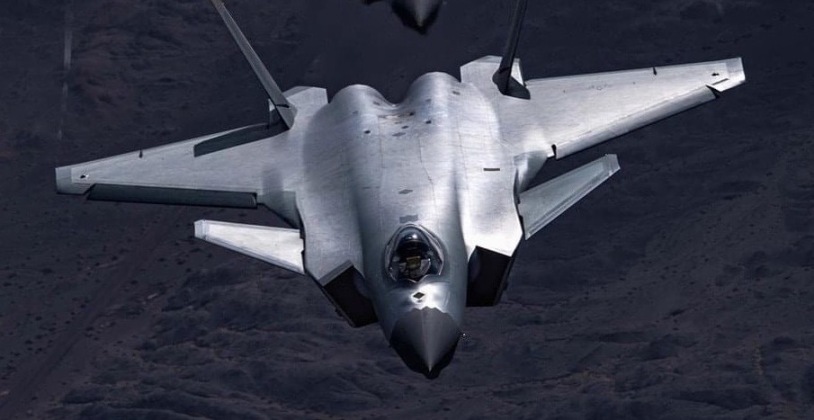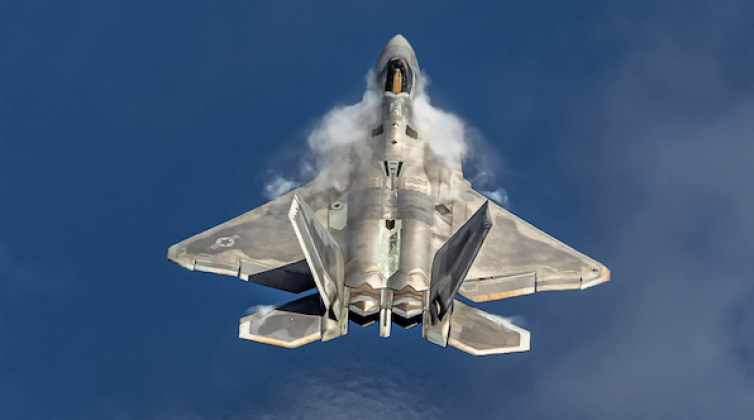On August 27 the Chinese People’s Liberation Army (PLA) Air Force gave its first public demonstration of the subsonic manoeuvrability of its J-20 fighter, with two of the aircraft deployed at the Changchun PLA Air Force Open Day in Northeast China’s Jilin province. Its performance contrasted to the basic flying past and conservative turns that the aircraft previously demonstrated, showing sharp climbs and turns which few fighter classes in the world are capable of. The J-20 is one of just two fifth generation fighter classes both in production and fielded at squadron level strength anywhere in the world, alongside the American F-35, and has been entering service in fast growing numbers after full scale mass production was announced in December 2021. With fifth generation fighters using radar cross section reducing stealth airframes, they are generally far heavier than their fourth generation counterparts which has made high low speed manoeuvrability particularly difficult to achieve.

While the American F-22 achieved high manoeuvrability through use of twin F119 engines, which are the most powerful ever integrated onto an active fifth generation fighter, its flight performance and thrust/weight ratio nevertheless failed to match fourth generation rivals of its era such as the Russian Su-37. The F-22 has long since been retired from production, with orders to do so given in 2009 due to a range of shortcomings. The F-35, meanwhile, relies on a single more powerful F135 engine and has a poorer thrust/weight ratio leading it to be considered the least manoeuvrable fighter of its generation. As a twin engine fighter the J-20 was long expected to have manoeuvrability comparable or superior to the F-22, with improvements to its engines allowing it to increasingly realise its potential. The aircraft’s newer design, use of canards and access to thrust vectoring technologies transferred from Russia were major factors fuelling expectations that it will surpass the F-22 in manoeuvrability at all speeds, supplementing its advantages in endurance and avionics.

J-20 fighters produced from mid 2019 have integrated new WS-10C engines, which provide both greater reliability and higher thrust without afterburners than the Russian built AL-31F M2 the class previously relied on. The Chinese PLA Air Force notably gained access to high manoeuvrability fighters before its Western counterparts, having been marketed the MiG-29 and Su-27 from 1989 which were both the leaders by a significant margin for their time and purchasing over 100 of the latter before producing domestic variants. The Su-27’s indigenous Chinese derivative the J-11B improved on the flight performance of the original, particularly through its much increased use of composite materials, and as the J-20’s direct predecessor the fighter set a high bar for the new stealth fighter to surpass. Although the J-20 was not thought to have matched the low speed manoeuvrability of fighters equipped with the thrust vectoring engines, its recent performance and manoeuvres during climb in particular were more complex than anything the American F-22 was ever seen performing, raising the possibility that the aircraft is now the most manoeuvrable of its generation at least at low speeds.

The J-20 was first seen flying with a next generation WS-15 engine in January, which when inducted into service is expected to provide not only massive increases to range and non-afterburner cruising speeds, but also to manoeuvrability at all ranges. The engine is expected to be by far the most powerful ever integrated onto a twin engine fighter, and to augment its power with thrust vectoring capabilities. A notable benefit of fifth generation fighters is that because they carry weapons internally, it is never possible to tell whether they are armed or not allowing them to give impressive performances at airshows without it being clear that they are in fact much lighter than they would be in combat. While the J-20’s performance at Changchun was entirely unprecedented, and there is little doubt that it has very comfortably surpassed the F-35 in this regard, much remains uncertain regarding its limitations particularly if carrying a combat load.
